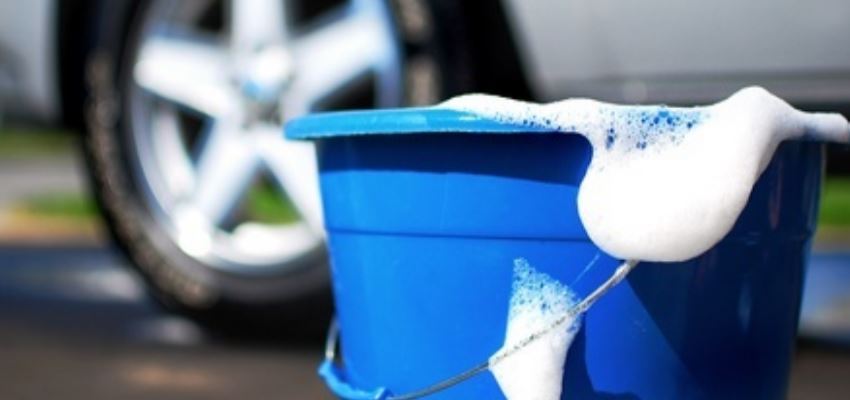DIY Tips: At-Home Car Washing
Most of us get a bit of satisfaction from washing our cars, not to mention saving a few bucks. This simple act of washing your car can increase your sense of pride, and accomplishment by making one of your most priciest possessions look clean and shiny. However, there is more to washing your car than slapping some soap and water in a bucket, then scrubbing away. The following are some tips on how to wash your car the right way, without damaging or scratching the finish.
How often should I wash my car?
Washing your car weekly can preserve your car’s finish, and will keep it looking nice. Take care to wash off any tree sap (I’ve given tips on this before: Rubbing Alcohol), bird droppings, and dead bugs, as soon as possible. Also, if you live in an area with a high prevalence of pollutants, rinse off your car after periods of rain. This will prevent acid rain droplets from drying, and thus eating your finish.
Pro Note: Don’t wait until your car “needs” a wash, waiting too long can do a number on the paint and finish. You would be surprised how you can prolong the overall beauty of your vehicle’s paint and finish by a good cleaning.
What should I use to wash my car?
Special Car Washing Solutions have mild chemicals specifically designed not to damage paint, and preserve your car’s finish. Instead of going at it first thing, Follow the instructions on the bottle, to make sure you have the optimal concentration, for cleaning your car. Take care to use a soft, clean, natural sponge or a lamb’s wool mitt, when applying suds to the car. Avoid aggressive scrubbing, let the cleaners do the work!
Hard to remove road deposits can accumulate around the wheel wells. These often require a stronger cleaner, like tar and bug remover products. Using a soft clean cloth, apply cleaner, and gently scrub off grease, rubber, and other deposits.
Wheels and tires can accumulate brake dust, dirt, and other road debris. Therefore, use a dedicated sponge, or brush, (separately) when cleaning these areas. This helps to keep the grime out in your cleaning sponge, so you do not scratch the paint. Mild soap and water, or special tire cleaners, should work to get your tires and wheels clean. Many cars come with clear coats on the wheels, so make sure to check and see if the solution is made to work on your type of wheels (again, read the instructions!).
Pro Note: Using common household cleaning products can remove the protective wax coating, and rapidly degrade the paint. Household cleaning products like hand soap, dish detergent, and glass cleaners, can have harsh chemicals, not formulated for use on your car. Take the time to use the right products and follow instructions.
The Car Washing Process
Making sure to focus on one portion of the car at a time, rinse, wash, then rinse again. Rinsing your vehicle thoroughly, before you wash it to remove excess grime, will help to get rid of paint damaging debris. Working in small sections, always from the top of the car down to the bottom (using gravity), gives you plenty of time to rinse detergent completely away, before it dries.
Always make sure to have an ample amount of cleaner when washing your car. This will provide lots of suds, and lubrication, to prevent scratching your paint, or finish. Take care to rinse your washing sponge thoroughly and often. This will prevent grit from becoming embedded in the sponge. Rinse the sponge in a spare bucket, so you do not transfer dirt, and debris, back onto the car.
After washing, always remember to use a water hose without a nozzle, when rinsing your car. Rinsing from the top down, the water creates a sheeting effect. This reduces the chance of water pooling on different portions of the car.
Washing your car after it has been sitting in the sun, or immediately after driving, is never a good idea. The hot temperature causes the soap and water to dry faster. This can cause difficulty, in rinsing off all of the detergent, leaving spots, and possibly causing damage to the paint.
Pro Note: Using a circular pattern, when applying suds to the car, can leave noticeable swirl marks in the paint. It is for this reason, that you should always wash your car using lengthwise strokes. Never use a sponge that has been dropped on the ground, unless you rinse it out completely. Dirt and grit, picked up from the ground, will scratch your paint.
Drying Your Car
Making sure to use clean soft towels, blotting the surface of your car, reduces the chance of water spots. Natural, or synthetic, chamois and soft terry towels work best for mopping up water, and protecting the paint. Never drag the towels across the car, as this can increase the risk of scratching the paint. Using a soft squeegee will help to slough off water, and help to speed the drying process. Make sure the squeegee is clean, and does not pick up dirt, while using it on your car, as this will cause scratches in the paint.
Do not think driving around and letting the car air dry, will leave water spots. Minerals, from hard water, cause these spots, and are left after all the water evaporates. Again, never use rough or dirty towels to dry your car. These can leave fine scratches in the clear coat, causing the car to lose its luster.
There you have it, I hope these tips are helpful! As always, if you need help – or don’t want to – bring your car to M&M Auto Detailing today!
—
www.MMAutoDetailing.com
(860) 430-1889

